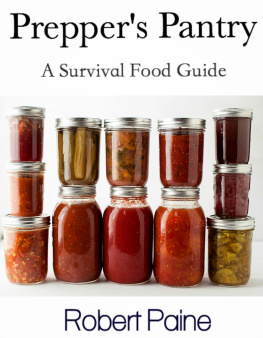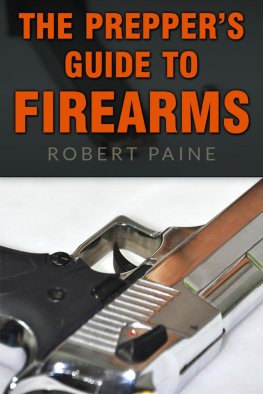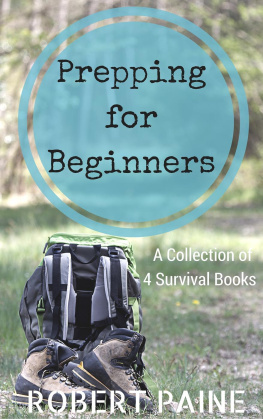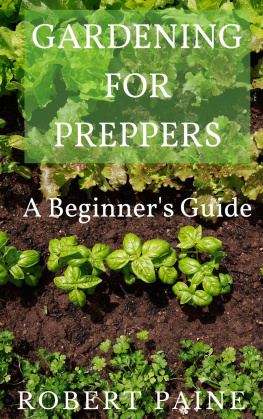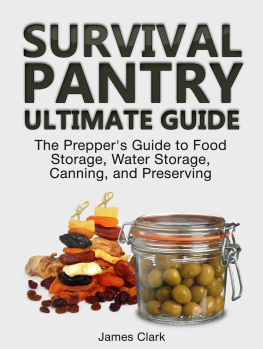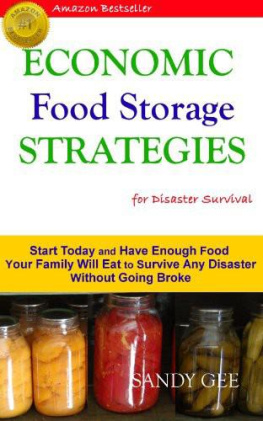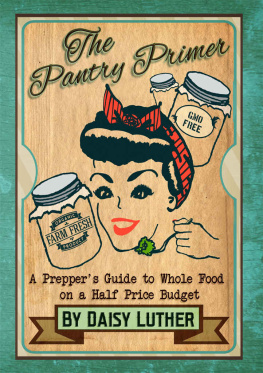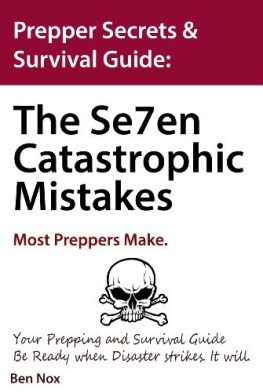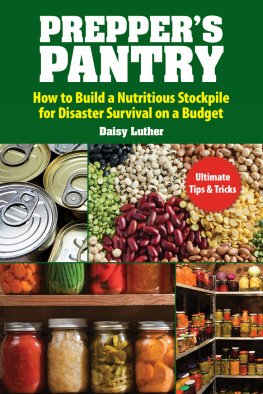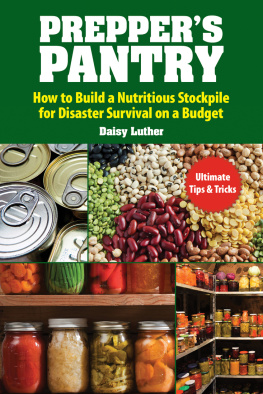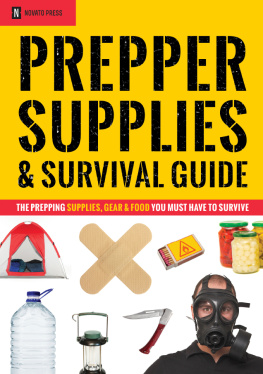Also by Robert Paine
The Dead Road
The Dead Road: Vol. 1 - Isolation
The Dead Road: Vol. 2 - Maybridge
The Dead Road: Vol. 3 - Stockton
The Dead Road: Vol. 4 - Survival
The Dead Road: The Complete Collection
Virus Z
Virus Z: Breakout - Episode 1
Virus Z: Sojourn - Episode 2
Virus Z: Ardor - Episode 3
Virus Z: Niagara - Episode 4
Virus Z: Quixotic - Episode 5
Virus Z: The Complete Collection
Standalone
The Prepper's Guide to the End of the World - (A Collection of 8 Best-Selling Survival Guides)
10 Ways to Start Prepping Today
Gardening for Preppers: A Beginner's Guide
Prepping for Beginners: A Collection of 4 Survival Books
The Nomad Prepper: A Guide to Mobile Survival
The Prepper's Guide to Foraging
Bugging In or Bugging Out?
Bug Out Bag Basics
Prepper's Pantry: A Survival Food Guide
Prepping 101: A Beginner's Survival Guide
Prepping with Children: A Family Survival Guide
The Frugal Prepper: Survival on a Budget
The Grid Down Prepper: How to survive when the power goes out
The House by the Lake: A Post-Apocalyptic Novella
The Prepper's Bundle: Even More Survival Guides for Every Situation
The Prepper's Guide to Firearms
The Ultimate Prepper Collection: Survival Guides For Every Situation
The Urban Prepper: A City Survival Guide
Top 10 Prepping Mistakes (and How to Avoid Them)
Preppers Pantry
A Food Survival Guide
By Robert Paine
2016
All rights reserved. No part of this publication may be reproduced, distributed, or transmitted in any form or by any means, including photocopying, recording, or other electronic or mechanical methods, without the prior written permission of the publisher, except in the case of brief quotations embodied in critical reviews and certain other noncommercial uses permitted by copyright law.
And above all Enjoy!
Table of Contents
Introduction
P reparing for a sudden economic downturn is something that has gotten a lot of mainstream media attention in the last few years. With the popularity of the television show Doomsday Preppers, people who were not at all involved in the prepper lifestyle are suddenly interested in developing a stockpile of necessities for that just in case day that preppers talk about.
What is a prepper? Simply put, its one who prepares for the possibility that the world may catastrophically change at some point in our future, leaving food supplies, fuel supplies, and our current lifestyles drastically changed. Those reasons for change could be local, regional, or even on a worldwide scale.
Before the availability of long distance trucking, and even international shipping, of fresh meats and produce, most people prepped, to some degree. Most likely, your grandparents had a garden, and canned or otherwise preserved the food they grew and harvested throughout the summer, so that they would have food for the coming winter. They may have even had a cow and a pig or two, and butchered regularly, either freezing or canning the meat to add to their winter stores. If you read the Little House On The Prairie books when you were younger, you were introduced to the prepper lifestyle; in those days, preparing for the winter was a matter of necessity. Without the proper supplies in place, families would die of starvation.
Modern supermarkets have made the need to do this kind of yearly prepping all but disappear. Almost any type of fruit or vegetable is available year round, if youre willing to either pay a high enough price for it, or buy it already canned or frozen. Modern meat packing plants butcher cows and pigs daily, with the animals being brought to feedlots a few weeks before slaughter, to pack on pounds and insure that you can buy bacon whenever youre in the mood for it. Modern food preservation methods mean that food can sit on store and home shelves for months, even years, without going bad. Truthfully, its easier, and often cheaper, to buy your produce already canned, than it is to grow a garden and preserve it yourself. So much easier, in fact, that home food preservation is rapidly becoming a lost art.
Many people with the prepper mindset have developed a balance between preserving fresh food at home, and the use of supermarkets or wholesale clubs to enhance their personal stores. The methods of preparing that work best for you will depend on many factors such as your budget, the availability of certain tools and kitchen appliances, space, and your personal reasons for prepping.
Preppers stockpile food for a variety of reasons. Some people, much like our grandparents, stockpile food because their work is seasonal. Maybe the primary wage earner is a construction worker, who doesnt work much in the winter. Some people prepare because they are contract employees, and they know that they may not have a contract at any given point. Having three or six months worth of food on hand is one less expense they will have to worry about while job hunting. They may be preparing for an economic downturn, or simply taking advantage of sale prices. Finally, they may be preparing for TEOTWAWKI, or The End Of The World As We Know It.
The TEOTWAWKI scenario is one that has been gaining ground in recent years. There are many reasons people think that humanity will undergo a catastrophic change in the coming years. Peak oil, the theory that we have drilled the most oil we will ever get, and that available supplies will slowly dwindle to extinction, is an often-cited fear. Climate change or catastrophic weather event are also near the top of the list of reasons why people prep. There are people afraid of a shadow government or New World Order, and there are some people concerned about a biblical Armageddon.
The reasons why you prep really dont matter. What matters is how long youre prepping for, and the means you go about doing it. This guide will show you how to determine your food needs, no matter how long you will be prepping for, and will discuss various methods of obtaining and storing food stockpiles.
Chapter One: Determining Your Food Preparation Needs
D etermining your food preparation needs can be dependent upon many factors. The two most important factors are length of time youre preparing for, and how many people you will need to feed with the food that you stockpile. People prepping for seasonal job loss may be prepping for three or six months. A Doomsday Prepper may be prepping for years.
Another major determining factor in building your food stockpile is space. You need to determine if youve got enough protected storage space for the food that you want and need to store. This storage space can be inside your house, in your garage, or in secure outbuildings. Make sure you can protect your food storage from animals of all types, and from wet, freezing, or humid conditions. Below are different suggestions for storage
Glass Ideal for most foods, glass can take the form of jars of water bath or pressure canned foods, vacuum-sealed storage containers, or containers with screwed on lids. Glass also works very well for freezing soups, broths, and foods not appropriate for canning, if you have the space in your freezer. Cost can be considerable. A water bath canner can run you $40-$60, and canning jars can cost up to $10/dozen if bought new. The explosion in popularity of Mason jar crafts has made it difficult to find used canning jars for a reasonable price. However, if you take careful care of your jars, you wont need to buy many more with subsequent canning seasons. Expect to pay between $100 and $200 for a good quality pressure canner. Glass does a good job of keeping out smaller pests like bugs and mice, but the breakable jars can result in food loss if they are knocked over.

